In our increasingly global world, adapting a product to new markets is key to growth. Given the right strategy and ambition, even a small family business based in a remote Swiss mountain village can reach customers worldwide.
Many businesses identify this huge potential and are eager to embark on their global journey, but they soon discover taking things international means mastering a whole new language, dotted with mysterious acronyms. By understanding some of the most commonly used acronyms, any business can focus its energies on conquering the world.
Wait, is it worth it? Isn't localization very expensive? Where would I even start?
Localization can indeed be a vexing and costly process, but with the right partner, like Blueprint’s dapper localization specialists, providing multilingual content can be a breeze and will undoubtedly pay off. To put it differently: While calculating the return on investment of localization is complex and highly specific to each company, product and market, recent research strongly suggests that not localizing means losing business.
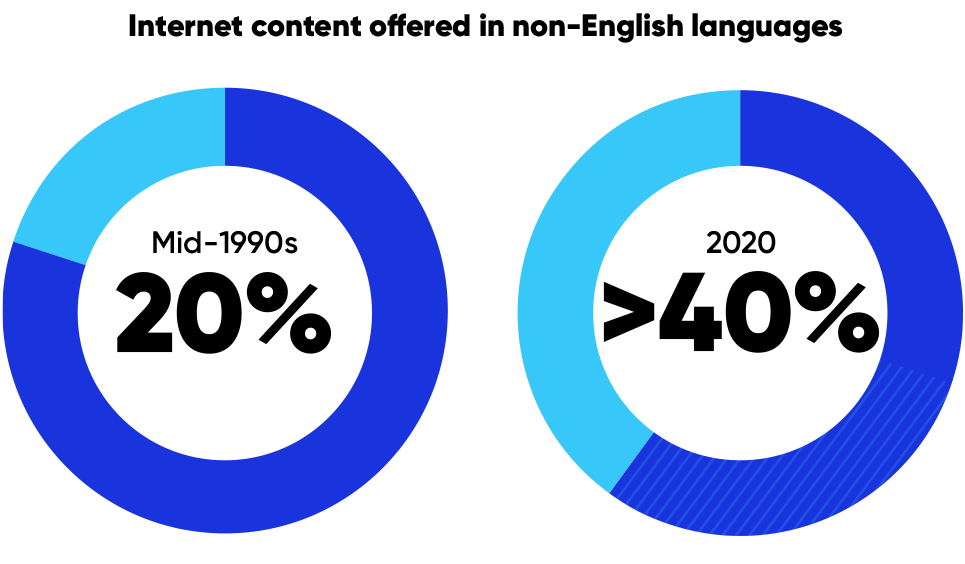
Let’s start with the basics. The number of people who browse the internet in English is smaller than most would guess, and it’s dwindling. In the mid-1990s, 80% of content on the internet was offered in English. In 2020 this share had shrunk to somewhere between 30% and 60% (sources vary), but only 26% of internet users browsed in English — a 5% decline compared to figures ten years ago.
Most likely, those numbers are a severe overestimation since many languages are not catered to online. This is partly because of the assumption that users have sufficient knowledge of other widely used languages, such as English, French and Spanish, so they don’t need content in their own language. For instance, huge populations speak Hindi, Telugu, Bengali and Arabic, but localization efforts often overlook these languages. Yet, a 2011 Gallup poll commissioned by the European Union that covered 27 member states found:
- A staggering 42% of respondents, on average, never purchase products and services in a language other than their own.
- 56.2% of consumers, on average, stated that when considering a purchase, having information available in their own language was more important than price.
Remarkably, this pattern even held in countries traditionally considered to have a high degree of English literacy. For instance, 30% of Danes and 45% of the Dutch stated they never use a language other than their own to search for and buy products on the internet.
ROI: Speak to users in their own language and doors will open
Existing case studies on the return on investment (ROI) of localized content bear this out. A 2014 study on mobile advertising showed an impressive 86% percent of localized campaigns outperformed the English versions in click-through rates (CTR) and conversion rates (CR). More specifically, localized versions averaged a 42% increase in CTR over their English counterpart and a 22% increase in CR.
As part of a research series spanning 15 years tellingly titled Can’t Read, Won’t Buy, a research team monitored the performance of Fortune 500 companies in relation to their localization efforts to estimate ROI. Their latest data shows that companies with localized content were 1.8 times more likely to experience year-over-year revenue growth and 2.5 times more likely to experience profit growth.
If the increase in profit wasn’t telling enough, here is one more crucial point. A small but compelling body of research into the relationship between user behavior and native language strongly suggests that speaking a different language means interacting with digital products in a different way. For instance, a paper on language-specific patterns used on Twitter found the type of information contained in tweets and even what tweets are used for differed significantly between languages.
T9N / L10N / I18N / G11N
The acronyms T9N, L10N, I18N and G11N stand for translation, localization, internationalization and globalization, respectively. As some have undoubtedly already sussed out, the numbers indicate the total count of letters between the first and the last letter of each word. Still confused? Follow along to go from alphabet soup to global mastery.

The four are easily mixed up, but they address different aspects businesses need to consider when preparing their product for international markets.
T9N, or translation
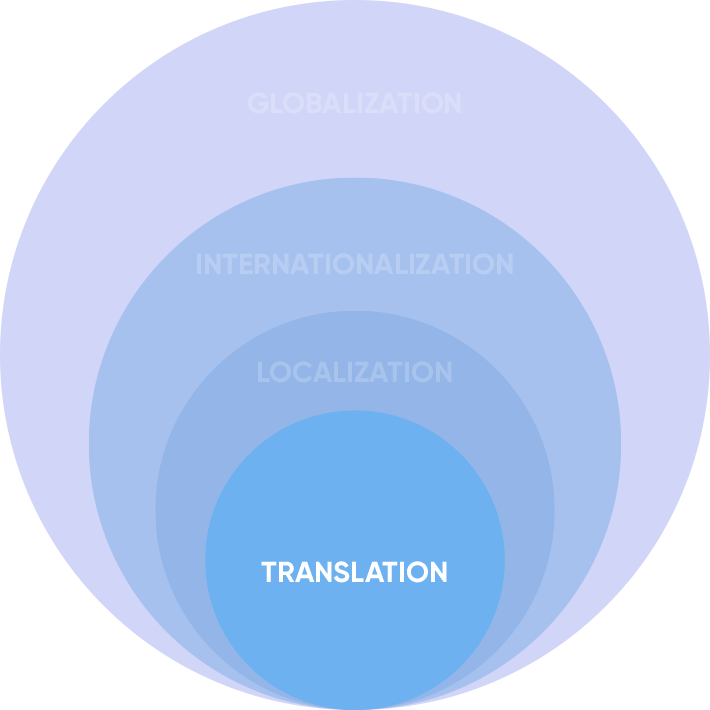
This is likely the most familiar of the four. Translation simply means rendering text or speech from one human language into another. For instance, translators can translate a blog post on how to happily work from home from English into Italian.
L10N, or localization
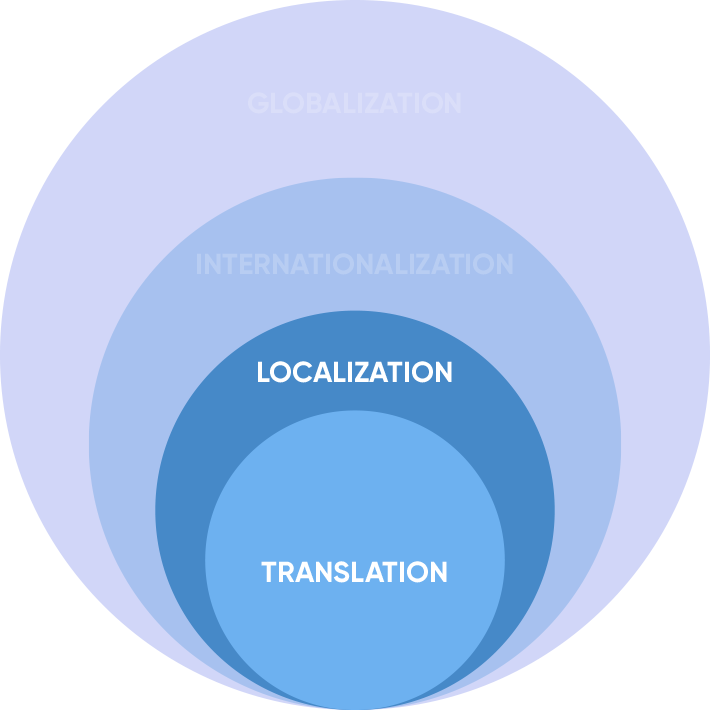
Localization broadens the scope of translation. It involves adapting a product to its intended audience’s culture, locale and patterns of use. Great localization means users will experience a product not as something translated for them but as a product natively built for them.
Localization goes beyond just dealing with text or speech and considers audio-visual materials, app store and search engine optimization and issues with the user interface (UI) and user experience (UX) that might arise when addressing a new target audience. A simple example would be localizing certain emojis, which might mean radically different things in different languages. For instance, a hand raised in salute with fingers spread out might mean serious trouble in Greece — it’s the equivalent of flipping the bird stateside — and in China, clapping hands can signify making love. With so many cultural differences, there are plenty of pitfalls for the uninitiated.
As a result, localization rarely produces a literal copy of the original simply rendered in another language but rather a new product finely tailored to its particular audience. When localization produces not a mirror version but its own original version, copywritten and designed specifically for the target market, that is transcreation.
I18N, or internationalization
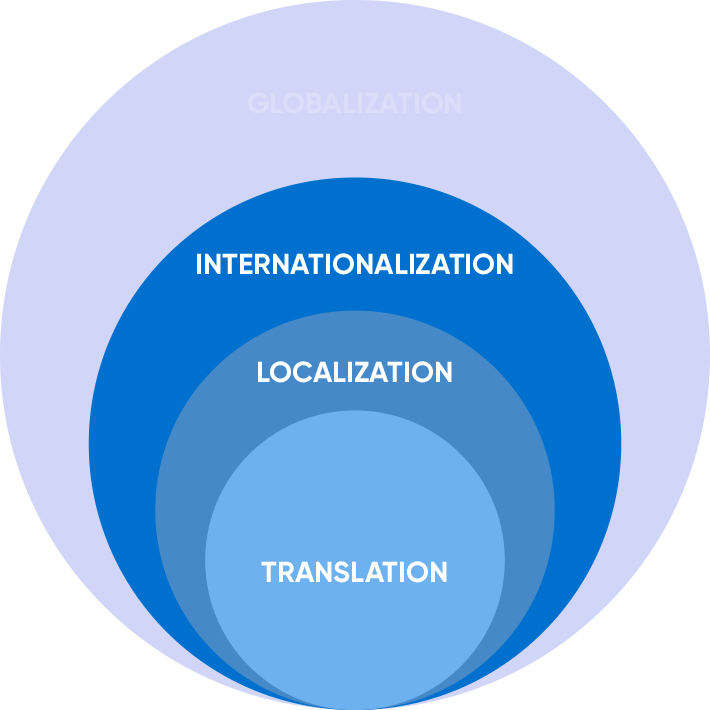
Internationalization refers to the technical side of getting products ready for international markets. Different languages can demand different specifications from a UI. Some languages might, for instance, need a lot of characters to say something, where others need just a few, which requires budgeting more space. Most languages are read from left to right, but others need UIs that can adapt to vertical or right-to-left. Internationalization can range from making coding adjustments to using the right fonts and much in between.
As discussed above, users of different languages can have different patterns of use for apps or websites that are important to consider. Internationalization and UX research into linguistically determined use patterns should go hand in hand, though this is still somewhat uncommon.
The consequences of neglecting internationalization can be grave. Date formats are a great example. A very common internationalization task is making sure code can accommodate regional differences in time, date and currency formats. The date format standard in the United States, mm/dd, is reversed in much of the world to dd/mm, which can wreak havoc without proper internationalization. Making sure a UI uses appropriate fonts is another. Using fonts that will correctly display tonal or accent marks is essential to understand many languages appropriately. Think, for instance, of the difference a tilde (~) makes in the Spanish word “años.”
Internationalization is most often the domain of localization engineers and specialized production artists. Then UI testers validate whether adjustments function correctly. A common technique used to test whether internationalization functions as designed is pseudo-localization, which means using fake content in a particular language to test whether a UI is well adjusted and to ferret out unanticipated issues.
While this might sound like minutiae, it cannot be emphasized enough how crucial carefully considered internationalization is to a great localized experience for the end user. Ask any localization professional, and they’ll have countless stories of, at best funny, but unfortunately often confusing, frustrating or even embarrassing, errors in on-screen text due to coding or a UI design that failed to accommodate product internationalization adequately.
G11N, or globalization
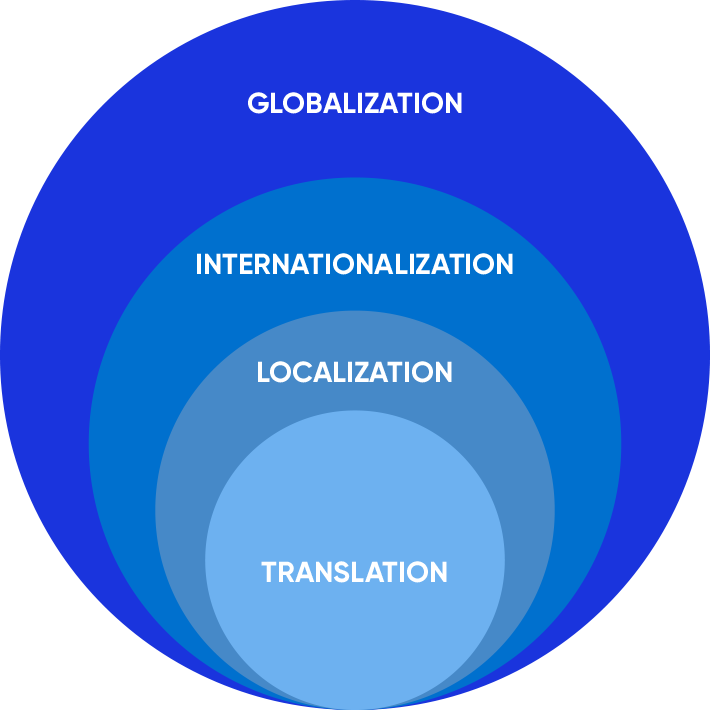
Globalization refers to the business side of launching a product globally. No product can succeed without solid business intelligence (BI), and this is truer still in unfamiliar markets.
Globalization tackles all the legal, logistical and practical aspects of working in new markets, including market research, product design, making contacts in new markets, developing market-entry strategies and locale-specific content strategies, exploring legal and HR issues and customer retention and growth once established.
Globalization also takes a different place in the timeline of creating products for a global customer base. Whereas translation, localization and internationalization work with an existing product and so come after development, this is not necessarily the case for globalization. Globalization can, and arguably even should precede product development. While an uncommon strategy in the past, more and more companies with global ambitions are realizing user or market research performed in their home location will not always produce relevant intelligence for other areas. Likewise, product evaluation in global markets demands a diversified approach. Globalization then occurs before, during and after product development.
Still confused and unsure where to start? Not to worry, the passionate and experienced Localization team at Blueprint will gladly help you strategize and prepare a product for its global launch in 27 languages. Are you a localization professional interested in working in a multicultural team of creatives? Make sure to browse our open job postings.

